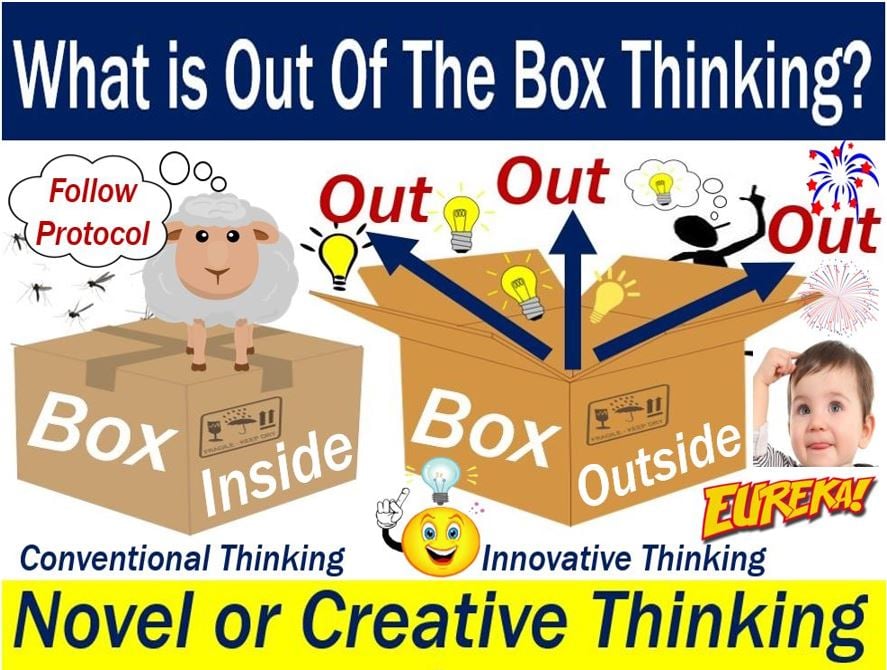Out Of The Box Thinking means thinking differently or unconventionally. In other words, thinking about something from a new perspective. We can also say ‘thinking outside the box,’ ‘thinking out of the box,’ or ‘thinking beyond the box.’ In Australia, some people say ‘thinking outside the square.’ It is a metaphor that means to think in a novel or creative way.
Out of the box thinking is not constrained by conventional barriers that we commonly self-impose. When you think out of the box, you explore uncommon and non-logical ways and solutions to a problem.
The term has become very popular in business environments. Many people, in fact, refer to it as a cliché. It is especially popular among executive coaches and management consultants.
The Power of Breaking Conventions
The act of out of the box thinking is more than just business jargon; it represents the essence of innovation and creativity.
This method of thinking is crucial, especially in an era where unique solutions are prized. It encourages us to break free from the status quo, challenging established norms and patterns.
By stepping outside conventional thought processes, we can discover a plethora of innovative solutions, which may lead to groundbreaking results.

‘I’ vs. ‘Out’ of the box thinking
The ‘box’ is a frame, i.e., the conventional way of approaching or thinking about a problem. In business, people typically ‘think in the box‘ because we structure business around a box. In other words, the box in business is the Standard Operating Procedure.
The Standard Operating Procedure (SOP) is a series of step-by-step instructions that an organization has compiled. SOP aims to help employees carry out complex routine operations.
With an ‘in the box thinking’ approach, we look at the problem plus the facts. We then look at, for example, solutions one, two, and three, and finally pick one.
This business approach to business is about as far as you can get from out of the box thinking. It does not generate interesting or radically new solutions to frustrating or puzzling problems.
In a Huffington Post article, Liz Ryan explains why business people tend to adopt an ‘in the box thinking’ approach. It is ironical, she adds, that humans, who are creative animals, take this approach.
Ryan writes:
“We could be tons more innovative than we are if we’d just acknowledge the fact that traditional American business isn’t based on the idea of solving complex problems in clever ways.”
American business, Ryan argues, believes in the idea that somebody a long time ago thought of every possible scenario. Additionally, this person, who we imagine is smarter than we are, developed a procedure for each one of them.
He adds:
“Once we climb outside the box, all sorts of possible solutions emerge.”
‘In the box thinking’ undermines innovation, some management consultants say. In business, innovation refers to inventing and creating new products, business models, or process methods.

Out of the box thinking – origin
Nobody is sure when the term first emerged in the English language. It became popular after John Adair introduced a nine-dot puzzle in 1969.
According to management consultant Mike Vance, the phrase originated in the Walt Disney Company. Executives in the company used the nine-dot puzzle as part of their management training.
